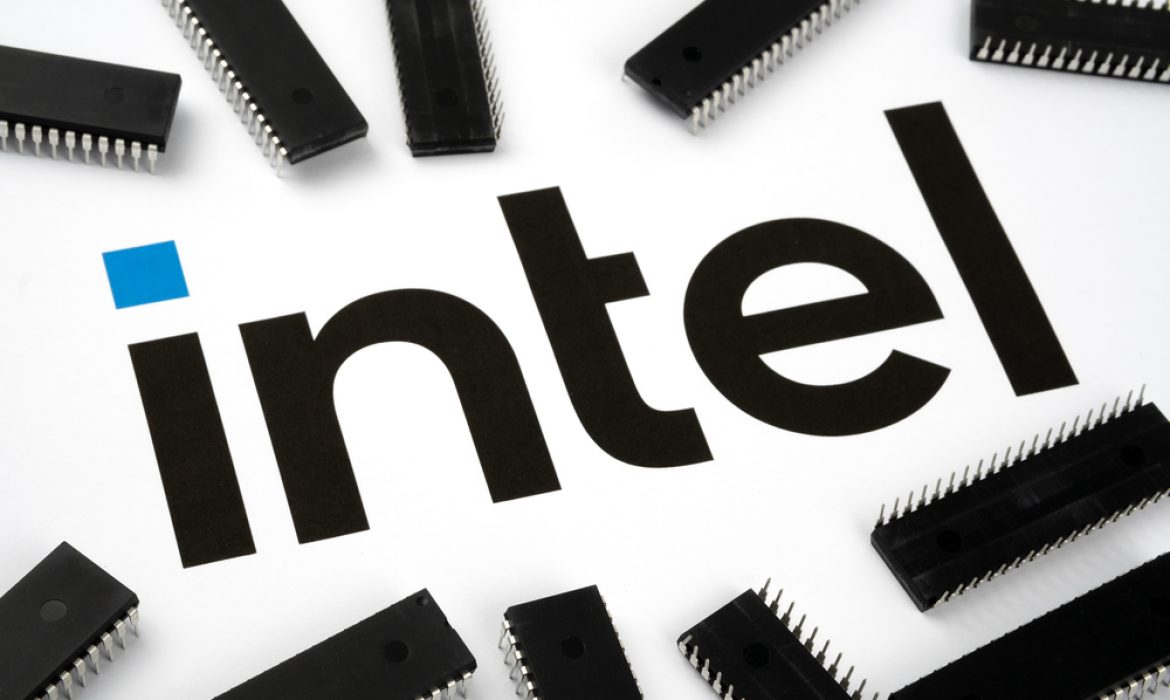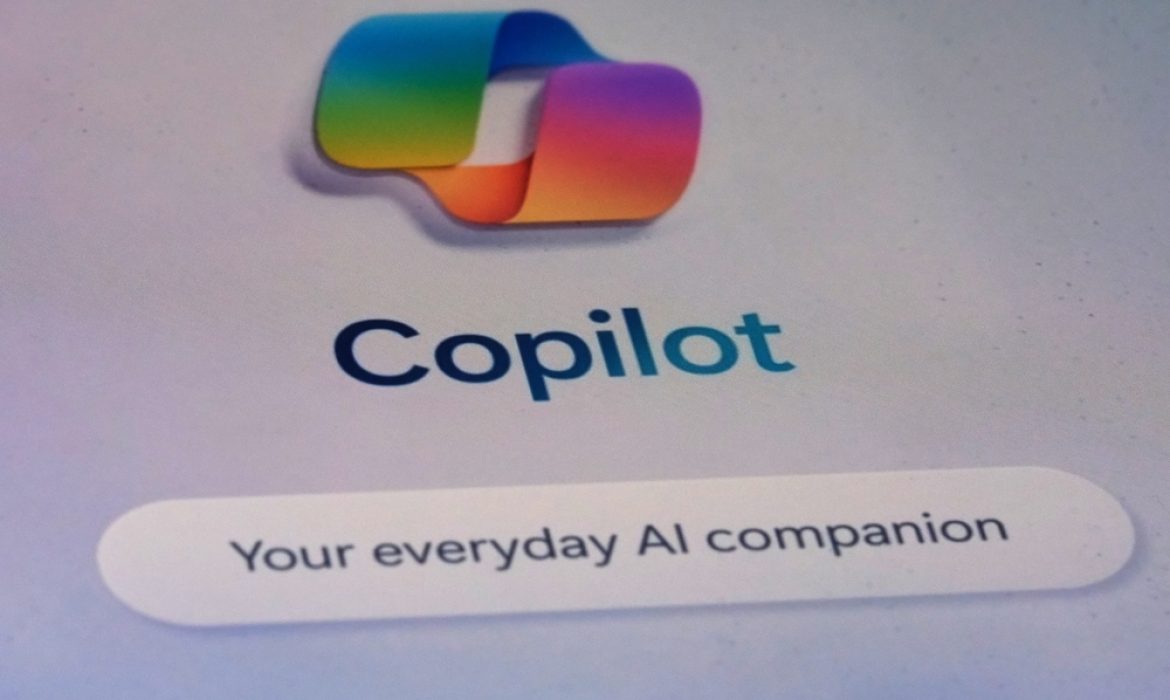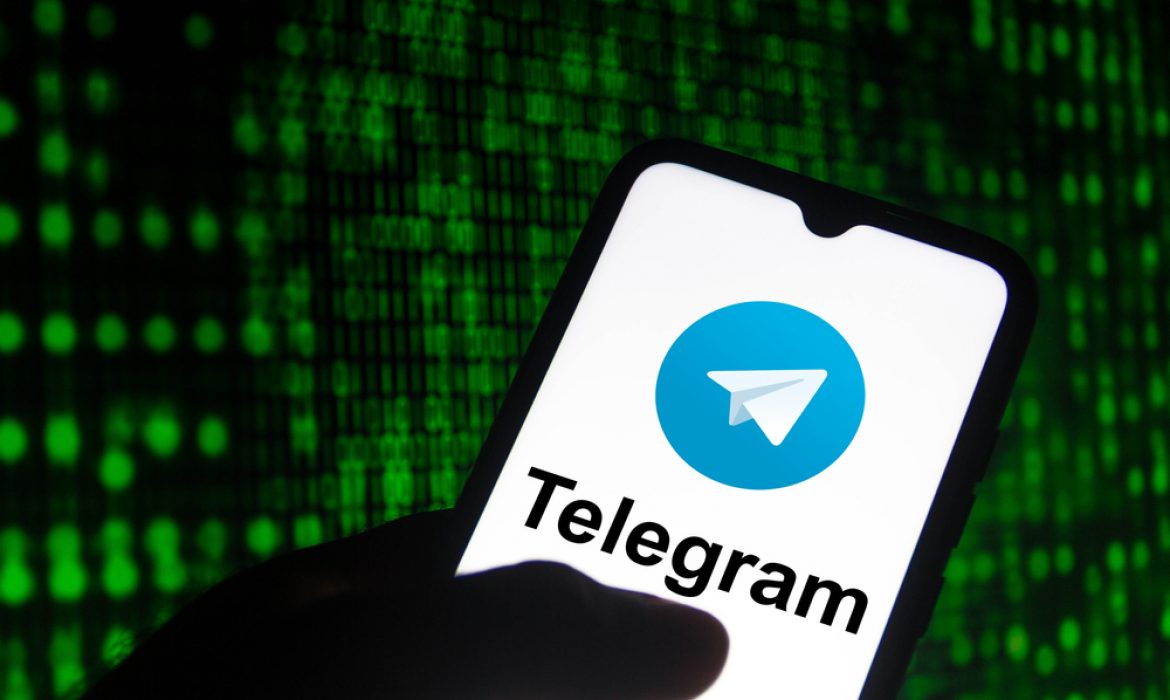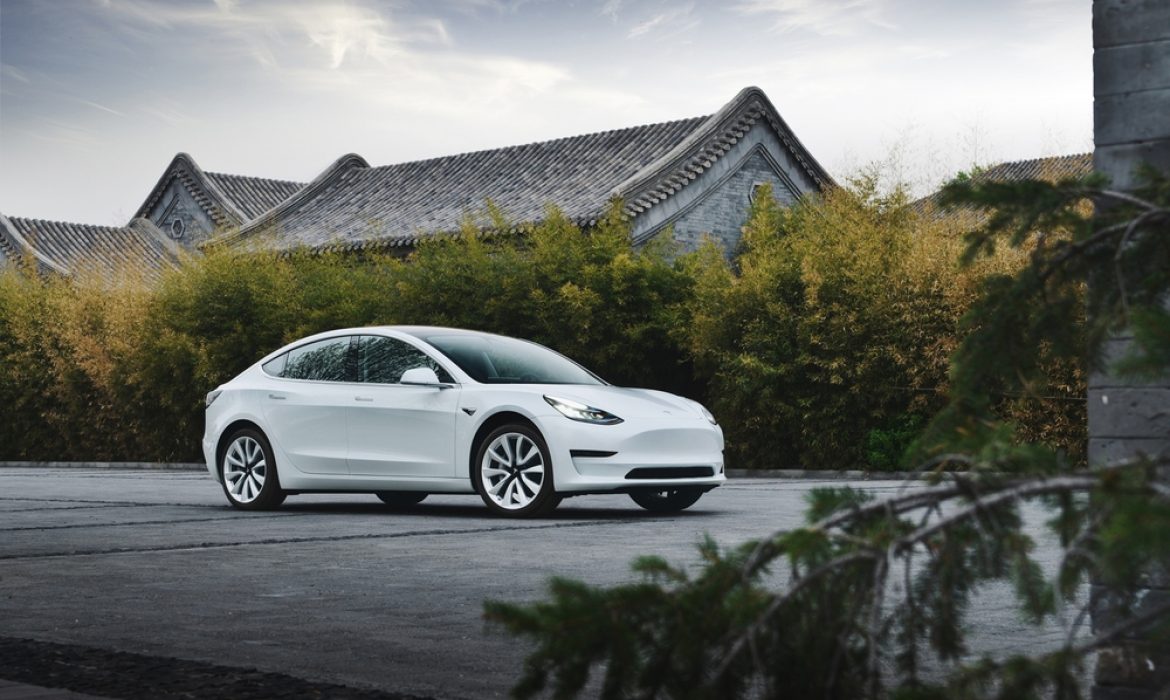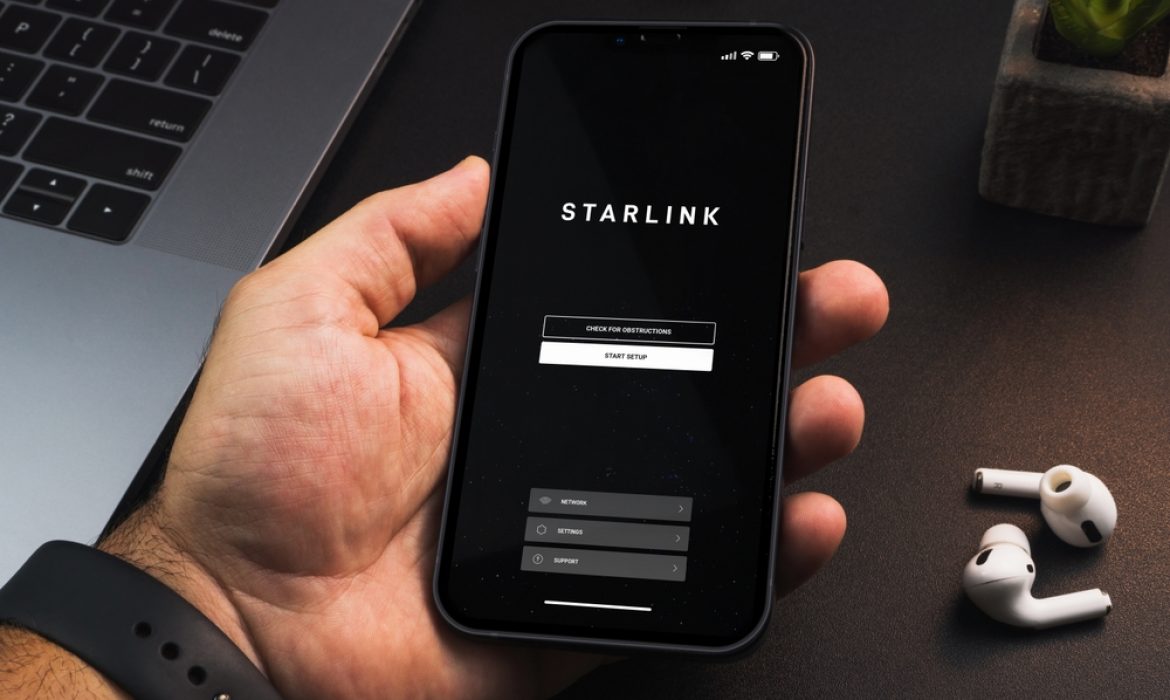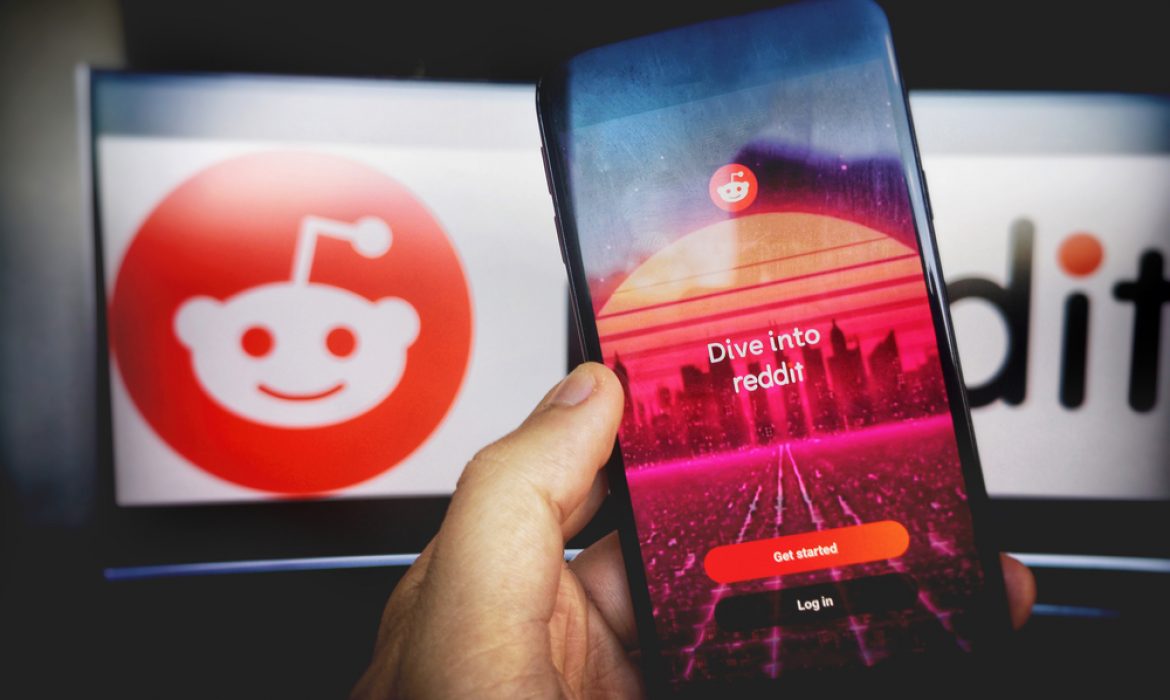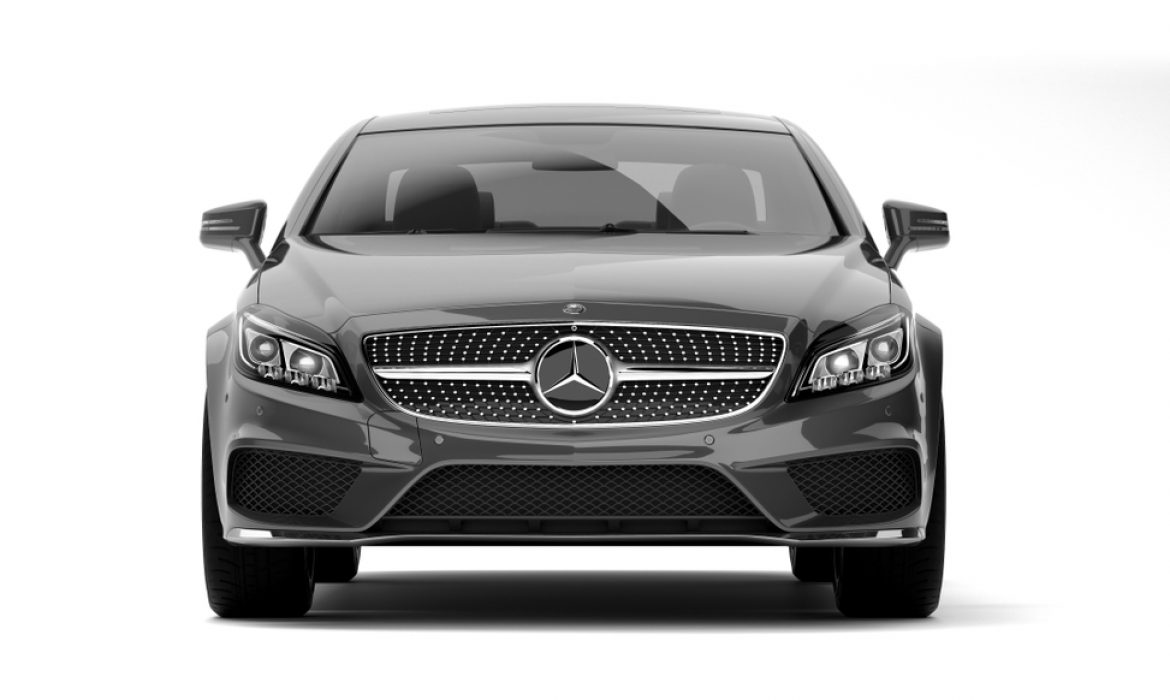Intel receives CHIPS Act funding for U.S. manufacturing development
Intel Corporation stands to receive a staggering $8.5 billion injection from the U.S. government under the CHIPS and Science Act, marking the largest investment ever made under this legislation. This transformative funding signals a robust endorsement of Intel’s pivotal role in advancing domestic semiconductor research and manufacturing capabilities.
Under a tentative agreement with the Department of Commerce, Intel could harness these funds to bolster its U.S. manufacturing facilities, particularly focusing on expanding fabs for advanced semiconductor chips primed for applications in artificial intelligence and other cutting-edge technologies.
This significant public investment is anticipated to underpin Intel’s initiatives across four states, including the construction of two state-of-the-art advanced logic chip plants and the modernization of existing facilities in strategic locations such as Chandler, Arizona, New Albany, Ohio, Rio Rancho, New Mexico, and Hillsboro, Oregon. Complementing Intel’s substantial commitment, the $8.5 billion government infusion will complement the company’s colossal $100 billion investment in U.S. manufacturing over the next five years. Moreover, Intel retains the flexibility to access up to $11 billion in additional funds through borrowing under the agreement.
The CHIPS and Science Act, signed into law by the Biden administration in 2022, aims to bolster domestic semiconductor research and manufacturing, strategically reducing U.S. companies’ dependence on Chinese suppliers. This latest tranche of investment represents the administration’s fourth significant allocation under the CHIPS Act, firmly positioning Intel at the forefront of U.S. semiconductor resurgence. The synergistic amalgamation of Intel’s financial commitment and government funding crystallizes into one of the most substantial investments in U.S. semiconductor manufacturing to date. In a parallel initiative, the government also earmarked $1.5 billion in CHIPS Act funding for GlobalFoundries, a division of AMD, to bolster its fab construction endeavors.
Intel’s expansive projects across the designated regions are projected to catalyze the creation of 20,000 construction jobs and 10,000 manufacturing positions, underscoring the far-reaching socio-economic impact of this collaboration. To ensure the local workforce benefits from these developments, the government will allocate $50 million towards training and skill development programs. However, these terms are contingent upon the preliminary agreement, subject to potential revisions by the Commerce Department following due diligence on proposed projects and subsequent negotiations.
Source: Engadget
Volvo Bids Farewell to Diesel with Release of Last Model
Volvo Car AB made a historic move this week as it bid farewell to an era, rolling out its final diesel-powered vehicle, the XC90 SUV, from its Torsland plant in Sweden. This decision marks a pivotal moment for the automaker, which has set its sights on an all-electric future by 2030.
Eric Severinson, Volvo Car’s head of new cars and operational strategy, expressed confidence in the company’s transition away from diesel. “We are confident that even without diesel we have very good offers for customers,” Severinson stated in an interview.
The shift away from diesel comes at a time when global demand for electric vehicles (EVs) is witnessing a slowdown. While Volvo Car remains committed to its electric vision, other automakers have been more tentative in their approach.
Mercedes-Benz Group AG recently revised its sales forecast, signaling a longer-than-anticipated timeline for EV dominance. Similarly, Audi announced cutbacks in its EV lineup late last year.
Volvo Car’s decision to embrace electrification dates back to 2017, when it became the first major automaker to announce plans to move away from fossil fuel-powered vehicles. Since then, the company has introduced hybrid and all-electric models, marking a significant shift in its product lineup.
The XC90, the final bastion of Volvo’s diesel era, has been instrumental in the company’s resurgence since 2014. As Volvo prepares to close this chapter, the last produced XC90 will find its place in the Volvo Museum, set to open next month in Gothenburg. Notably, the XC90 has an electric counterpart, the EX90, symbolizing Volvo’s transition towards greener mobility solutions.
Diesel, once hailed as a cleaner alternative to gasoline, saw its demand plummet following the 2015 emissions scandal involving Volkswagen AG. The revelation shook consumer confidence in diesel technology and accelerated the shift towards electric propulsion.
While Volvo Car remains committed to its electric future, the EV market in Europe faces challenges including subsidy cuts and increased competition from Tesla Inc. and Chinese brands. To navigate these headwinds, Volvo Car is tightening its belt and withdrawing funding from Polestar, an electric car subsidiary under Geely’s umbrella.
Despite these challenges, Severinson remains optimistic about Volvo Car’s future. “We believe our customers see the transition to green mobility as much as we do,” he affirmed. With the XC90 marking the end of an era, Volvo Car sets its sights on a sustainable and electrifying future.
Source: Bloomberg
Disappointing revenue statistics for 30k mobile apps
Mobile app developers are expected to push more aggressively for subscription-based usage next year. Figures from RevenueCat, which analyzed more than 30,000 apps show that most are struggling to reach $1,000 a month in revenue.
RevenueCat, a company developing a subscription toolkit for mobile apps, as reported by ArsTechnica, lists Reuters, Buffer, Goodnotes, PhotoRoom, and Notion among its customers. It is claimed that 90% of apps with an in-app subscription platform use RevenueCat, indicating the company’s significant influence in this form of monetization.
Only about 17% of the researched apps earn at least $1000 monthly. The percentage of researched apps generating more monthly revenue is even lower.
RevenueCat notes that once an app reaches $1,000/month in revenue, it is more likely to earn $2,500/month (59% who hit the $1,000 mark achieved this) or even $5,000/month (60% who hit $2,500/month achieved this).
RevenueCat’s data points to a significant imbalance in revenue distribution among subscription mobile apps: the report found that 12 months after launch, the top 5% of apps are generating 200 times more revenue than the bottom quartile. For new apps, the average monthly revenue after a year is “just under $50.”
As advertising costs continue to fall and developers seek ways to generate recurring revenue to support, maintain, and improve apps, subscriptions are expected to remain a major strategy.
The challenges with mobile app subscriptions include not only convincing people to pay for an app, but also convincing them to do so repeatedly. RevenueCat notes that compared to the 2023 report, the percentage of monthly subscriptions that persist after one year dropped 14%, which “impacted both the best and worst performers.” Among other findings, monthly subscriptions have an average first renewal rate of more than 60%, but retain only 36% of the original number of subscribers when it comes time for the third renewal.
Developers hoping for recurring revenue are facing users increasingly discouraged by subscription fatigue. According to a 2022 report by consulting firm Kearney, 42% of consumers “believe they have too many subscriptions.” However, in the case of mobile apps, recurring payments may make more sense than in other businesses such as print shops.
Mobile app subscription prices are expected to rise over the next year. In the year since RevenueCat published its 2023 report, the average monthly rate has increased 14%, from $7.05 to $8.01. Factors such as rising customer acquisition costs, interest in looking like a premium app, and AI could present an economic challenge for developers and affect pricing.
RevenueCat also expects developers to experiment more with other revenue sources, such as in-app purchases and affiliate marketing, over the next year.
Microsoft Empowers Users with GPT-4 Turbo in Copilot Pro Free Version: Chatbot Creation Now Accessible
Microsoft Corporation has unveiled a significant upgrade to its Copilot Pro subscription, offering users the opportunity to harness the power of LLM GPT-4 Turbo from OpenAI. This move marks a pivotal milestone in democratizing access to advanced AI capabilities for a broader user base.
Expanding Access to Copilot Pro Features
Copilot Pro, now available in 222 countries worldwide, introduces users to a host of new features, accessible through a complimentary one-month trial. Following the trial period, users can seamlessly transition to a $20 subscription, unlocking a plethora of advanced functionalities.
Among the key offerings included in Copilot Pro are priority access to the latest OpenAI models and the ability to craft personalized Copilot GPT instances tailored to specific use cases. Notably, Copilot Pro integration extends to Office web apps, eliminating the prerequisite of a Microsoft 365 subscription for access.
Empowering Creativity with Copilot GPT Builder
Furthermore, users can leverage the innovative Copilot GPT Builder, albeit restricted to personal computers initially. However, chatbots developed through this platform can be deployed across both PCs and mobile devices, enhancing accessibility and versatility.
Users preferring the previous iteration of LLM GPT-4 in Copilot can seamlessly switch back to it through the menu options, ensuring flexibility and catering to diverse user preferences.
Mobile Integration on the Horizon
Microsoft has revealed plans to extend Copilot Pro integration to mobile apps, including Microsoft 365 and Outlook for iOS and Android, in the near future. This strategic move underscores Microsoft’s commitment to facilitating seamless AI integration across various platforms, empowering users with enhanced productivity tools on the go.
Encouraging Mobile App Adoption
To encourage greater adoption of the Copilot mobile app, users can embark on a trial journey by installing Copilot on iOS or Android, providing a hands-on experience of its capabilities. This initiative reflects Microsoft’s proactive approach to fostering user engagement and enhancing accessibility to cutting-edge AI technologies.
Expanding Copilot for Microsoft 365
Additionally, Microsoft is broadening the accessibility of Copilot for Microsoft 365, making it available to a wider array of businesses. Customers with subscriptions to Microsoft 365 F3 and F1, Office 365 E1, Business Basic, among others, will now have the option to purchase Copilot for Microsoft 365, enriching their productivity suite with AI-driven functionalities.
Microsoft’s endeavor to democratize access to advanced AI capabilities underscores its commitment to driving innovation and empowering users with tools to unleash their creativity and enhance productivity in an increasingly digital landscape.
Source: Microsoft Blog, OpenAI Announcement
Telegram Hits 900 Million Users, Eyes Profitability, and a Potential $30 Billion IPO – Pavel Durov Reveals Insider Details
Pavel Durov, the founder of Telegram, proudly unveiled the staggering success of the messaging platform, emphasizing its meteoric rise in popularity and financial prowess. With a current user base of 900 million monthly active users, a substantial leap from the 500 million recorded at the beginning of 2021, Telegram stands as one of the world’s most sought-after social networking applications.
Monetization Strategies and Revenue Surge
Durov shared insights into Telegram’s financial standing, revealing that the platform now rakes in “hundreds of millions of dollars” in revenue. This significant uptick in earnings followed the introduction of advertising and premium subscription services. The visionary leader hinted at the likelihood of Telegram becoming profitable next year, or even as early as the current year, given favorable conditions.
Valuation and IPO Prospects
Telegram’s remarkable success has not gone unnoticed by potential investors. Durov disclosed that various “global last-stage technology funds” have proposed a valuation surpassing $30 billion for the company. However, he firmly asserted that selling the platform is not on the cards. Instead, Telegram is exploring the prospect of an initial public offering (IPO) to maintain its independence.
“The main reason we started monetizing is that we wanted to remain independent. Overall, we see the value [of an IPO] as a means of democratizing access to Telegram’s value,” explained Durov.
Potential U.S. Listing and User Involvement
Sources close to the matter suggest that Telegram is likely to pursue a U.S. listing once the company achieves profitability and market conditions align favorably. Durov refrained from specifying the IPO’s timing or location but affirmed that Telegram is considering various options. Notably, he expressed interest in involving loyal users in the IPO process, taking inspiration from Reddit’s user-centric approach.
Moderation Upgrades and AI Implementation
With numerous elections unfolding globally, Durov outlined Telegram’s commitment to enhancing its moderation processes. The platform plans to deploy artificial intelligence mechanisms to address potential issues, striking a balance between user freedom and responsible content management. Durov emphasized that, as long as users do not cross red lines, their expression would not be subject to extensive monitoring.
Telegram’s journey from a niche messaging app to a global powerhouse reflects not only its commitment to user privacy but also its strategic approach to financial sustainability and future growth. As the platform eyes profitability and a potential IPO, the tech world watches with anticipation to see how Telegram’s next chapters unfold.
Tesla: $234 billion drop raises concerns about demand for electric cars
Tesla, helmed by Elon Musk, has witnessed a staggering 29% dip in stock value within a mere 10 weeks, reaching its lowest point since May. This tumultuous descent has resulted in a jaw-dropping $234 billion reduction in market capitalization, settling just above $550 billion.
Outshining Giants: More Than McDonald’s, Disney, or Nike
Business Insider reports that this plunge surpasses the market values of corporate behemoths like McDonald’s ($212 billion), Disney ($202 billion), and Cisco ($199 billion). The collateral damage extends to Netflix ($259 billion) and Coca-Cola ($257 billion), exceeding the valuations of American Express ($158 billion) and Nike ($148 billion). The fall is magnitudes beyond Starbucks ($104 billion), Chipotle ($71 billion), FedEx ($62 billion), and Palantir ($58 billion).
Musk’s Fortune Shrivels: $40 Billion Personal Wealth Erosion
Concurrently, Elon Musk’s personal fortune has taken a hit, dwindling by almost $40 billion in 2024, plunging below $190 billion. This has reshuffled the billionaire hierarchy, ousting Musk from Bloomberg’s top spot, now trailing behind Bernard Arnault and Jeff Bezos.
Tesla’s Rise and Fall: A 60% Drop from November 2021 Peak
Though Tesla shares soared nearly fivefold since the start of 2020, they now stand diminished by 60% from their November 2021 zenith when the automaker boasted a valuation of $1.2 trillion.
Hertz Unplugs: Concerns Over Electric Car Demand and Repair Costs
The market upheaval finds roots in ominous signals of waning demand for electric vehicles, especially notable from car rental giant Hertz. Hertz is divesting itself of 20,000 electric cars in the U.S., citing concerns about demand and higher repair costs for electric-powered vehicles, a move aimed at balancing the supply-demand equation for electric vehicles.
Hertz’s Electric Vehicle Pivot: A Drastic Shift in Plans
As per Engadget, Hertz’s cautious approach to electric vehicles has been evident. In 2021, the company procured 100,000 Tesla vehicles, and subsequent plans to purchase up to 65,000 electric cars from Polestar were scaled back in October 2023. CEO Stephen Scherr cited electric vehicles costing “about twice as much in terms of damage repair costs as a conventional internal combustion engine vehicle.”
Tesla Still Towers: Value Surpasses GM and Ford Combined
Despite Tesla’s market turbulence, its current valuation remains over 10 times that of industry stalwarts General Motors ($46 billion) and Ford ($49 billion), underscoring the enduring impact of Musk’s brainchild in the automotive landscape. Hertz’s retreat from electric vehicle plans adds a new layer to the evolving narrative of electric mobility in the face of economic realities.
SpaceX and T-Mobile Achieve Record 17 Mbps Download Speeds via Starlink, Paving the Way for Seamless Global Connectivity
SpaceX, under the leadership of Elon Musk, has shattered expectations by achieving a maximum download speed of 17 Mbps from the Starlink satellite directly to unmodified Samsung Android phones.
Elon Musk took to X Twitter to announce this groundbreaking achievement, marking a significant leap in satellite-based communication technology. According to Musk, this speed milestone was achieved in real-world conditions, emphasizing the practical application of Starlink’s capabilities.
Clarifying the Technological Feat
Musk, responding to inquiries on Twitter, clarified that the 17 Mbps speed is the current peak per beam. Notably, he highlighted that the effectiveness of this system relies on the absence of cellular service. Musk stressed that Starlink operates in collaboration with wireless providers, a strategic partnership demonstrated by SpaceX and T-Mobile.
Strategic Partnership to Eradicate Dead Zones
In August 2022, SpaceX and mobile giant T-Mobile initiated a partnership aimed at eliminating cellular dead zones through the use of Starlink satellites. The initial plan projected speeds of 2-4 Mbps for conventional 5G smartphones in specific coverage areas. However, the recent achievement far surpassed these expectations, reaching 17 Mbps in certain scenarios.
Texting Triumph and Global Expansion Plans
January 2024 marked another milestone for SpaceX and T-Mobile as they successfully sent and received the first text messages via the Starlink D2D satellites. Launched just a week prior, these satellites aim to provide satellite internet connectivity to regular cell phones, ensuring T-Mobile customers can stay connected even in areas without traditional cell phone coverage.
SpaceX plans to publicly launch text services with T-Mobile in 2024, with ambitious plans to expand offerings to include voice, data, and the Internet of Things (IoT) by 2025. Globally, SpaceX is forging partnerships with telecom giants such as Rogers in Canada, Optus in Australia, and KDDI in Japan.
Specialized Starlink Satellites and Successful Tests
To deliver these advanced communication services, SpaceX deployed the first six specialized Starlink satellites with direct-to-device (D2D) capability on January 2. Early tests were completed without complications, showcasing the robustness of the technology.
The Vision: A Cell Tower in the Sky
T-Mobile’s CEO, Mike Sievert, likened this technological advancement to placing a cell tower in the sky. He envisions a future where dead zones are eradicated, allowing people to easily communicate with loved ones, even in the remotest locations, such as the middle of the ocean.
Mixed Success and Challenges
While SpaceX proudly shared an image on X, formerly Twitter, depicting phones exchanging text messages via Direct to Cell satellites, attentive users noticed discrepancies. Some messages were lost in transit, underlining the challenges that still need to be addressed before this technology can achieve seamless global implementation.
Conclusion: A New Era in Global Connectivity
SpaceX and T-Mobile’s collaborative efforts are propelling us into a new era of communication. As the technology matures, the dream of a world seamlessly connected through satellite networks becomes increasingly tangible.
Source: Engadget
Reddit Charts New Territory with IPO, Offers Shares to Active Users
Reddit, the social media giant, has officially filed for an initial public offering (IPO) on the New York Stock Exchange, eyeing the symbol RDDT. The filing, detailed in an S-1 statement submitted to the Securities and Exchange Commission (SEC), outlines Reddit’s financial landscape and strategic objectives as it prepares to go public.
Financial Snapshot: Impressive Revenue but Unprofitable
According to the S-1 document, Reddit reported a substantial revenue of $804 million in the previous year, primarily fueled by advertising, which accounted for a staggering 98% of its income. However, the company finds itself in the red, disclosing a net loss of $90.8 million for the fiscal year 2023. Despite the financial challenges, Reddit boasts an impressive user base, with 267.5 million weekly active users, over 100,000 active communities, and a monumental 1 billion publications.
User-Centric IPO: Unusual Offer to Active Contributors
Breaking away from the conventional IPO model, Reddit is extending a unique opportunity to a select group of its top users. Moderators and individuals with high karma scores, who have played pivotal roles in shaping Reddit’s vibrant communities, will have the chance to purchase shares in the IPO. This unconventional privilege, typically reserved for seasoned investors, marks a significant departure from traditional practices.
Tiered System for Share Distribution: Rewarding Contributions
Reddit has designed a tiered system for the distribution of shares, prioritizing those who have made substantial contributions to the platform’s community programs. The first tier includes identified users and moderators who have significantly impacted Reddit’s community initiatives. Subsequent tiers invite those with a karma score of at least 2,000 and individuals who have completed a minimum of 5,000 moderator actions to partake in the IPO. The company has earmarked 1.3 million shares of its Class A stock to fund community-related programs, enabling Redditors to bring their innovative ideas to life.
Monetization Strategy: Beyond Advertising
In its S-1 filing, Reddit reveals components of its monetization strategy, which extend beyond traditional advertising. Data licensing and training artificial intelligence (AI) models are highlighted as key elements of this multifaceted approach. Reddit has previously announced a strategic partnership with Google, aiming to generate $60 million annually through AI system training.
Altman’s Influence: OpenAI CEO’s Significant Investment
Adding an intriguing layer to the narrative, Sam Altman, the CEO of OpenAI and a rival company, emerges as a key player in Reddit’s journey to the public market. Altman has invested over $60 million in Reddit stock, securing a substantial 9.2% of Reddit’s voting power. This strategic investment dates back to 2014 when Altman, then president of Y Combinator’s gas pedal, first engaged with Reddit. His continued investments until 2021 underscore his belief in Reddit’s potential.
As Reddit embarks on this unprecedented path, bridging the gap between user engagement and financial markets, the IPO’s outcome will undoubtedly be closely observed, reshaping expectations for social media platforms in the realm of public offerings.
Source: https://www.cnbc.com/2024/02/22/openai-ceo-sam-altman-stands-to-net-millions-as-reddit-goes-public.html
Intel Unveils Ambitious Plans for 1nm Manufacturing Process and $100 Billion Investment in Manufacturing Capacity
Intel made groundbreaking announcements that are set to shape the future of semiconductor manufacturing. The company revealed plans to launch its 1nm manufacturing process in 2027, accompanied by a substantial investment of $100 billion in manufacturing capacity.
Advancements in Node Technology
Intel had previously left the start date for its 14A node ambiguous, but the latest disclosure confirms that production based on the 14A (1.4nm) node is slated for 2026. A significant revelation is the initiation of production/development of the 10A node, set to be Intel’s first 1-nm class node, commencing in late 2027. The “A” suffix in Intel’s node nomenclature signifies angstrom, with 10 angstroms equating to 1 nm.
Performance Improvements and Packaging Capacities
While specifics about the 10A node remain undisclosed, Intel assured that it would deliver double-digit power/performance improvements. The anticipated enhancement over the 14A node is expected to reach 14-15%. Simultaneously, Intel plans to aggressively boost its packaging capacities, focusing on Foveros, EMIB, SIP, and HBI technologies to ensure a steady supply of advanced processors with intricate packaging, including High Bandwidth Memory (HBM).
Global Redundancy and Automation
Intel aims to establish geographically distributed manufacturing facilities, providing global redundancy in its operations. This strategic move will also enable customers to leverage a supply chain entirely based in America. Furthermore, the company is heavily investing in automation, planning to utilize artificial intelligence across various production segments. The integration of AI, from capacity planning and forecasting to improving yields and actual manufacturing operations, marks a significant shift.
Towards Fully AI-Automated Factories
Intel’s vision extends to the incorporation of AI “Cobots,” collaborative robots designed to work alongside humans, and extensive robotic automation within the manufacturing process. The company has not specified a timeframe for these changes, but the comprehensive integration of AI is expected to reshape every aspect of Intel’s operations.
Intel’s transformative approach aligns with the industry’s ongoing efforts to push the boundaries of semiconductor technology. As the race for smaller and more efficient nodes intensifies, Intel’s commitment to 1nm and its massive investment signal a pivotal moment in the evolution of chip manufacturing.
Source: Tom’s Hardware
Mercedes-Benz Shifts Gears: Abandons Ambitious Plan for Exclusive Electric Car Sales by 2030
Mercedes-Benz has announced its departure from the bold vision it embraced just three years ago, indicating a significant deviation from its plan to sell only electric cars after 2030. The company’s decision adds to a growing sense of skepticism within the global auto industry regarding an all-electric future, with industry leaders reevaluating their strategies amid a noticeable slowdown in electric vehicle (EV) sales growth.
Optimism Fades: A Shift in Strategy
Three years ago, Mercedes-Benz was brimming with optimism, boldly proclaiming its commitment to selling only electric vehicles by 2030 and abandoning traditional gasoline-powered cars. However, the recent fourth-quarter earnings report paints a different picture. The company now anticipates that only 50 percent of its sales will be all-electric, marking a substantial retreat from its once optimistic projections. Gas and hybrid vehicles, it seems, will continue to play a significant role in Mercedes’ future for the foreseeable years.
Adapting to Market Dynamics
Mercedes-Benz acknowledges that the pace of transformation will be determined by customer preferences and market conditions. The company aims to cater to diverse customer needs, providing options for both all-electric powertrains and electrified internal combustion engines throughout the 2030s. This strategic shift underscores the influence of external factors on the auto industry’s trajectory.
Caution in Europe: A Reality Check
Even in Europe, where EV sales have outpaced their North American counterparts, Mercedes-Benz CEO Ola Kallenius expressed a pragmatic outlook. He stated that a complete transition to EV-only sales by 2030, both within the European market and for Mercedes specifically, is unlikely. This cautious sentiment echoes a trend among auto industry executives, including Tesla’s Elon Musk, who has warned of a significant slowdown in EV sales growth in 2024.
Industry-wide Caution: A Ripple Effect
The move by Mercedes-Benz follows a series of cautionary statements from industry leaders. Tesla, despite being a pioneer in the electric car space, anticipates a notable deceleration in sales growth. Similarly, companies like Rivian and Lucid have signaled that their production will remain steady this year. Traditional automakers, including GM and Ford, have responded by postponing plant construction and canceling certain models.
Market Realities: EV Sales vs. Hybrid Resurgence
In 2023, EV sales constituted nearly 8 percent of total sales in the U.S. and 13 percent in Europe. While sales are on an upward trajectory, buyers are increasingly discerning, considering factors such as price, charging times, and reliability. Simultaneously, hybrid vehicle sales have witnessed a significant uptick as consumers opt to hedge their bets during the ongoing development of charging infrastructure.
This decision by Mercedes-Benz not only reflects the challenges of achieving an all-electric future but also highlights the need for adaptability in an industry navigating complex market dynamics. The automotive landscape is evolving, and industry players must carefully calibrate their strategies to meet both consumer demands and the practicalities of the market.
Source: The Verge
